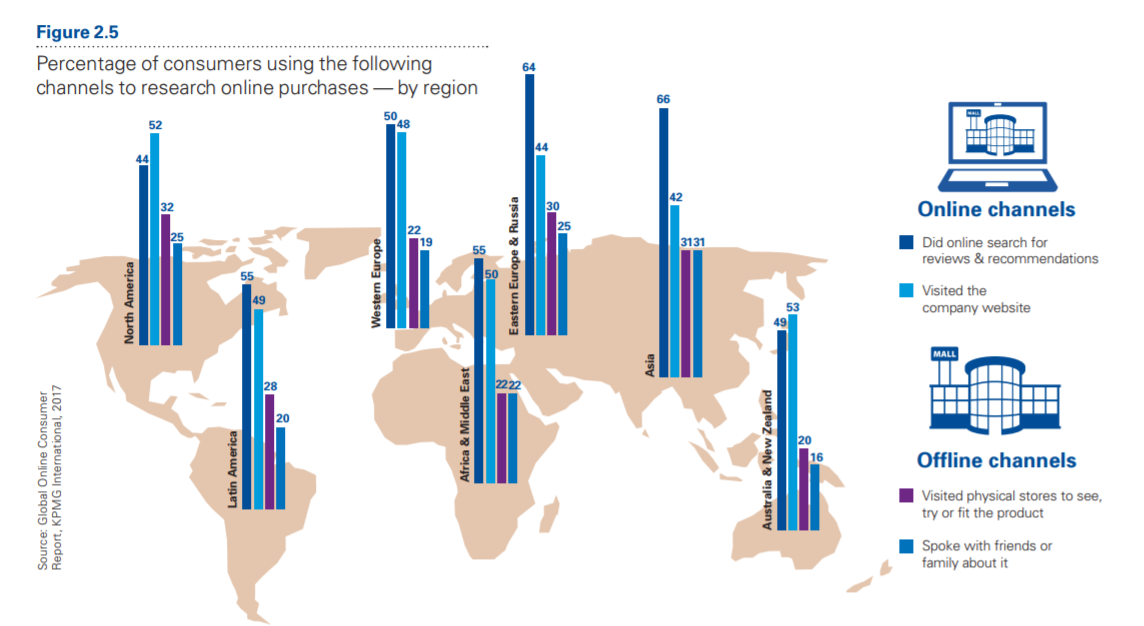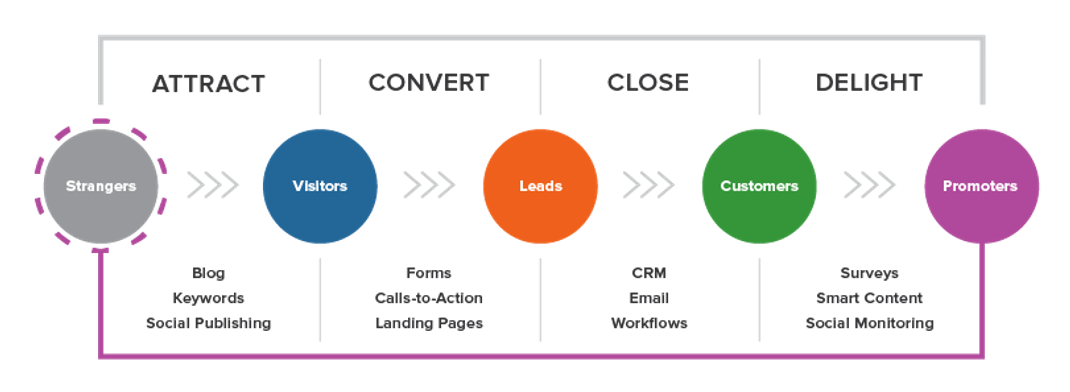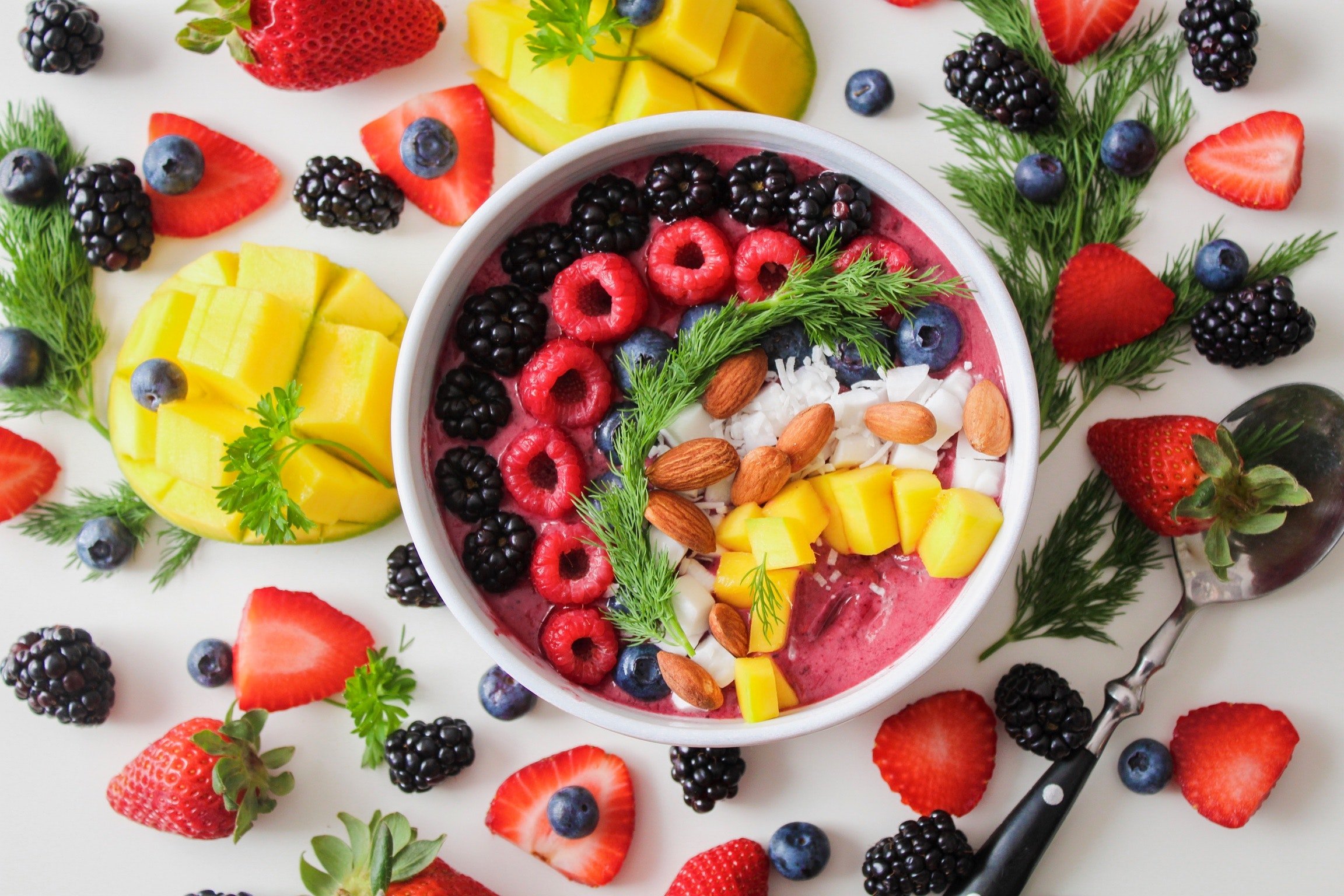This guide reveals the special inbound formula you should be using for Middle East- and Dubai-based brands.
Inbound marketing flips traditional marketing on its head and then does the kiki shiggy shake around it.
Inbound versus outbound marketing
Traditional marketing is outbound. Think of it as putting your product ‘out’ there. You’re cold-calling, shoulder-rubbing, and print-advertising your product to those you hope will buy.
As our post on why digital marketing is important shows, technology has made it infinitely easier to sell – it’s both cheaper and more efficient. And it is in line with how consumers are buying today.
Think about the last time you purchased a mobile phone. You likely didn’t just pop into a store at the mall and make a purchase. And if you were online, you likely didn’t click on the first or third ad for mobile phones that you saw.

KPMG reports that 55% of MENA consumer who purchase online first research the product online – looking at online reviews and recommendations
Rather, like most MENA online consumers, you likely researched phone reviews, looking at functionality, design and the size of the display. After doing your research, you went to your preferred electronics e-commerce site, or favourite offline store, and made the purchase. Consumers today are researching, asking questions and finding answers online before making their purchase; they are informed customers.
And that’s what inbound marketing excels at – it informs.
If you want to reach your next customer, make sure you provide them with the answers they’re looking for. Advise, help and inform. When you do, that’s how you bring them to your website and that’s where you ‘nurture’ them towards becoming customers. How?
By following the inbound marketing methodology, or working the inbound marketing funnel.
The Inbound Marketing Funnel
 There are 4 stages in the inbound marketing funnel and they describe the four stages that the typical customer goes through when making a purchase:
There are 4 stages in the inbound marketing funnel and they describe the four stages that the typical customer goes through when making a purchase:
– Awareness. Customers need to be aware of your brand, and so you ‘attract’ them to your site.
– Consideration. Customers ought to consider your brand, from amongst your competitors, before they buy. At this stage, you work on ‘converting’ them to prefer your brand over the competition.
– Decision. Customers take the decision to purchase your product. This is where you ‘Close’ the deal.
– Advocacy. Customers who develop an affinity for your brand are those most likely to promote it to their friends and family. By ‘delighting’ customers, they become brand advocates.
Inbound Marketing Tactics and Techniques:
As the above illustration shows, there are various tools one can use for each stage of the inbound marketing funnel, and they include:
1. Awareness/Attract: Blog Posts, Topic Clusters, Social Media Content, Search Engine Optimization (SEO), E-Books, Templates, Podcasts, Video Content
2. Consideration/Convert: Forms to download content, Calls-to-Action (CTAs), Landing Pages, White Papers, Email
3. Decision/Close: Customer Relationship Management (CRM), Email Marketing, Workflows
4. Advocacy/Delight: Surveys, User Generated Content (UGC), SMART content, Social Monitoring
Examples of Inbound Marketing versus Outbound Marketing
1. Real Estate. If I wanted to be the next Emaar or Jabal Omar or Ezdan Holding and I wanted to attract customers to a new luxury development project, I’d write a series of blog posts, optimized for SEO, about what my ideal customer/s is looking for when looking to purchase real estate.

Accordingly, I would:
a. Create blog posts on the return on investment an investor could expect,
b. Followed by video posts on the luxury amenities in the vicinity of the property, and
c. Publish a series of social media posts of famous celebrities that have already booked a space.
This content will drive people to my website and/or social channels. This will switch the dynamic from the traditional call-to-action, “Invest in our luxury property” to the prospect himself saying, “This luxury property sounds dreamy/an excellent investment. I would like to buy this luxury property”.
2. Hospitality and Food (F&B). Imagine I was a new vegan-friendly eatery at the Marina in Dubai, catering to the health-conscious. As opposed to just telling the public about our Friday brunch deal, every single Thursday(!), I would create the following inbound content that would raise awareness for the restaurant, and would have people actively consuming our content online:
a. Short 1-minute videos from the resident chef on how to prepare a healthy breakfast with minimum effort
b. Photo series showing us discussing in-season veggies and crops with local farmers
c. Food recommendations – soups, stews, goulash – at the onset of winter (to promote eating heart-warming, comfort food, in season)

In order to nurture those leads to convert, close and delight them I would then use emails, workflows and user generated content. I’d:
a. Share snippets of how we source healthy ingredients,
b. Offer promotional lunch deals for our social media followers, and
c. Repurpose customer testimonies of what made our Thai Buddha bowl with dragon sauce and freshly grated veggies so out of this world.
A Case Study – Inbound Marketing Example in the UAE and Middle East North Africa (MENA)
CRYO, founded in Dubai in 2013, specialises in cryotherapy, a curative and futuristic health treatment that uses extremely low temperatures to drive four main benefits: Recovery, Beauty, Wellness, and Weight loss.
As Barish Elrekabi, vice president of marketing explains why the company adopted inbound, ““We wanted to pitch to our potential clients in a more targeted and data-driven way. We have always been a Digital Marketing oriented company, however, we did not have an end-to-end solution”.
Before jumping on the inbound bandwagon, they received an average of 18,000 visitors a month. After deploying a strategic inbound marketing approach, they get 26,000 visitors, a 44% increase in website visits. As Elrekabi enthusiastically shares, “Our lead numbers have risen by 128%, from 350 a month to 800… [Because of inbound].. we have even been able to cut back on our PPC advertising.”
Read the full case study of how inbound marketing worked for this Dubai-based brand.
Important Caveat: Inbound Marketing doesn’t work alone
This is particularly true in MENA, meaning that paid promotions and the personal touch – physical networking, participation in marketing events, award ceremonies, trade shows, workshops and the like – ought to be core parts of your marketing engine. Inbound marketing is dead if that is the only element of your marketing strategy. Rather, inbound ought to be seamlessly integrated into a holistic marketing strategy.
I’m in. How do I upskill?
Hubspot offers excellent free, online courses in inbound. You can choose to watch the short videos if you are short on time; or invest a few hours and get certified with Hubspot’s Inbound Certification.
Are you looking for a more personalized solution?
Inbound, and digital too, can do wonders for you. Whether you’re selling real estate, food or pharma. If you’re not sure where to start with inbound or are looking to optimize your digital footprint, fill in your details below and we’ll show you how to ride the digital wave. There’s no commitment, and no charge. If you believe digital can be valuable for your brand, take advantage of this limited time offer.
In closing, if you’re a MENA brand, to attract your next customer, to increase customer loyalty, and to close your next deal, follow this simple three-step formula:
1. Advise, help and inform
2. Nurture
3. Synchronize with offline marketing techniques for a holistic marketing strategy
And there you have it. You’re now in the know.
